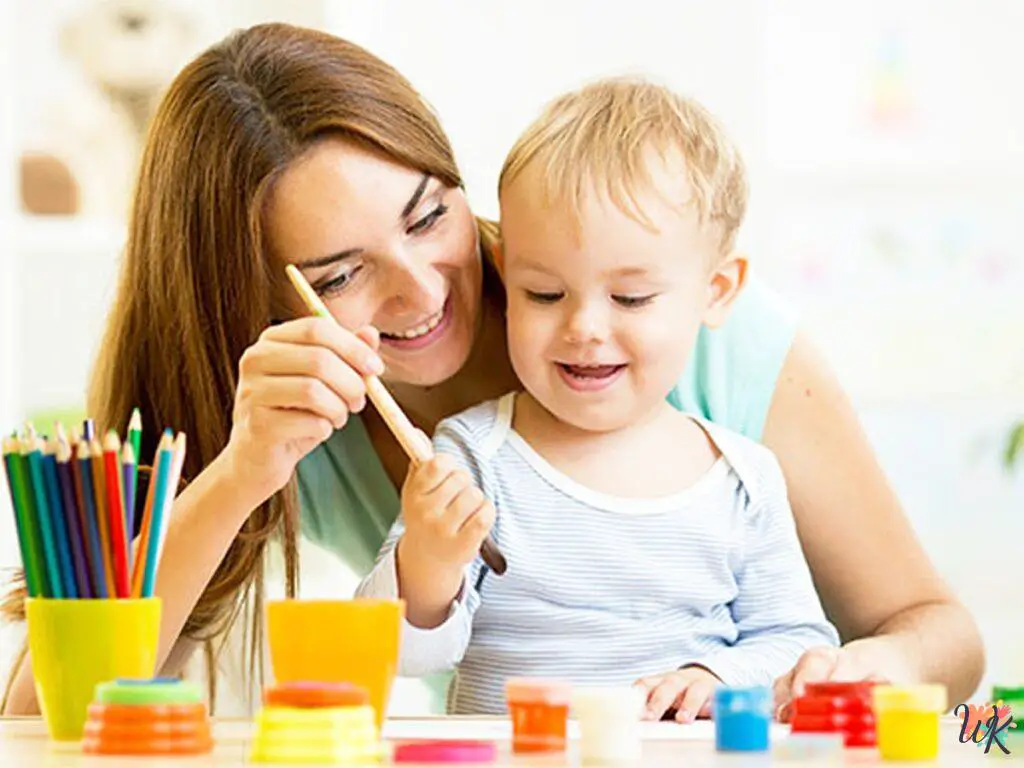Teaching children how to paint pictures is a great way to boost their creativity and aid in the development of their minds. Painting allows children to express themselves and offers various cognitive, emotional, and social advantages. This article delves into how painting can enhance a child’s cognitive growth and unlock their artistic abilities.

Exploring the connection between art and cognitive skills:
Research has shown that engaging in artistic activities like painting stimulates various areas of the brain, including the visual, motor, and sensory regions. When children paint, they learn to observe and interpret the world around them, enhancing their visual processing skills. Additionally, the act of holding a paintbrush and making deliberate strokes develops their fine motor skills, contributing to their overall cognitive growth.
The impact of painting on memory and concentration:
Painting requires children to focus their attention, think critically, and make decisions about color, composition, and subject matter. These cognitive demands help improve their concentration and memory abilities. By visually analyzing their surroundings and translating them onto the canvas, children develop their observation skills and enhance their working memory. These skills extend beyond the realm of painting and can positively impact their academic performance in subjects like mathematics and science.
Learn more about the WK community
The role of painting in self-expression and emotional regulation:
Painting and other forms of art are great ways for children to express themselves. They can use it to share their feelings and thoughts without having to use words, which can be especially helpful if they have trouble speaking. Painting lets children process and express their emotions, which can improve their understanding of themselves and help them manage their emotions better.
Painting as a therapeutic tool for children:
Painting is a useful tool in art therapy for children undergoing emotional struggles or trauma. It creates a safe space where children can explore their feelings, handle stress, and develop healthy coping strategies. This can also provide a sense of empowerment, offering them a way to take back control over their emotions and navigate complex situations.

Painting and the development of problem-solving skills:
Painting helps children develop problem-solving skills as they face different artistic challenges like composition, color combinations, and techniques. They also enhance their analytical and critical thinking abilities by making decisions and finding creative solutions through experimentation. Through these experiences, they develop flexible thinking and learn to approach problems from different angles.
Enhancing critical thinking through artistic expression:
Artistic expression encourages children to think outside the box and explore alternative perspectives. When painting, they learn to analyze their surroundings, interpret visual information, and make subjective choices. These processes enhance their critical thinking skills, allowing them to consider multiple viewpoints and approach tasks in innovative ways.
Conclusion
In conclusion, teaching children to paint pictures is a powerful tool for developing their minds and nurturing their overall growth. Through painting, children not only engage in a creative and expressive activity but also reap numerous cognitive, emotional, and social benefits.
By understanding the role of painting in children’s cognitive development, we can appreciate how it stimulates different areas of the brain, enhances fine motor skills, and improves memory and concentration. Painting provides children with a unique opportunity to explore their surroundings, observe details, and make artistic choices, fostering their cognitive abilities in various domains.

Hi there! My name is Becky Gomez, and I was born on December 12th, 1992 in the great United States of America. I am passionate about all things art and have always dreamed of sharing my love of art with others.
To pursue my passion, I attended some of the most prestigious art and painting schools in the United States. I earned a Bachelor of Fine Arts degree from the Rhode Island School of Design, followed by a Master’s degree in Art Education from Columbia University in New York.
Currently, I am an elementary school art teacher, inspiring and guiding young minds to explore their creativity and imagination. I believe that art education is an essential aspect of a well-rounded education and can be used to teach children valuable skills and important life lessons.
Outside of work, I am a savvy SEO professional and have created 5 popular coloring websites: ColoringpagesWk.com, Kleurplatenwk.nl, Disegnidacolorarewk.com, Dibujosparacolorearwk.com, and Coloriagewk.com. My goal with these websites is to provide fun and engaging resources for children to learn about art while also having fun.
I am passionate about using my talents and expertise to make a positive impact on the world, and I believe that education and the arts are the keys to achieving this goal. I am always looking for new opportunities to create and innovate, and I can’t wait to see what the future holds.
Contact Info:
Street: 950 Doyers Street
City: New York
State: NY
Phone: +1202-555-0126
Zipcode: 10013
Country: United States
